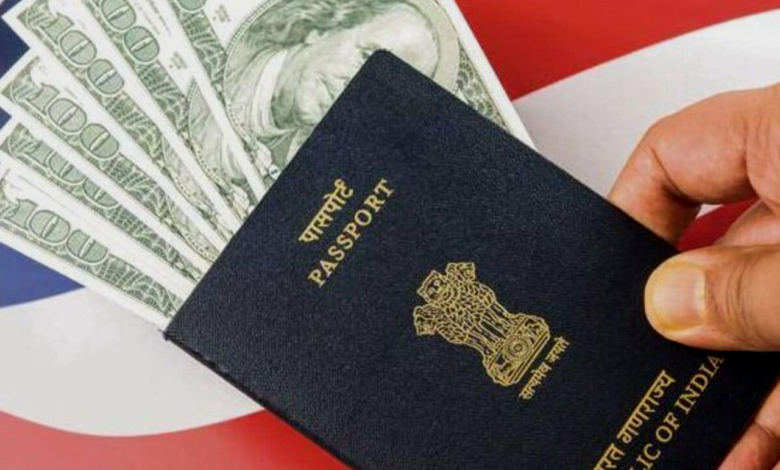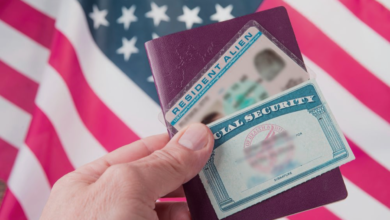How to Get a Green Card in Texas: A Step-by-Step Guide
Learn how to get a Green Card in Texas with this step-by-step guide. Discover eligibility, application process, and tips for success.

Obtaining a Green Card in Texas is a dream for many individuals seeking permanent residency in the United States. A Green Card not only allows you to live and work in the U.S. indefinitely but also provides a pathway to citizenship. Texas, with its thriving economy, diverse culture, and numerous opportunities, is a popular destination for immigrants. However, the process of securing a Green Card can be complex and time-consuming, requiring careful planning and adherence to U.S. immigration laws. This comprehensive guide will walk you through the step-by-step process of how to get a Green Card in Texas, covering eligibility requirements, application procedures, and tips to ensure a smooth journey toward achieving your immigration goals.
Eligibility Requirements for a Green Card
To apply for a Green Card in Texas, you must first determine your eligibility under one of the categories established by U.S. Citizenship and Immigration Services (USCIS). The most common pathways include family-sponsored immigration, employment-based immigration, refugee or asylum status, and the Diversity Visa Lottery. Family-sponsored Green Cards are available to immediate relatives of U.S. citizens, such as spouses, parents, and unmarried children under 21, as well as other family members under the family preference system. Employment-based Green Cards are designed for individuals with job offers in the U.S., particularly those with specialized skills, advanced degrees, or exceptional abilities. Refugees and asylees may also apply for a Green Card after meeting specific residency requirements. Additionally, the Diversity Visa Lottery provides an opportunity for individuals from countries with low immigration rates to the U.S. to apply for a Green Card. Understanding which category applies to your situation is the first step in the process.
Determine Your Eligibility and Category
Before beginning the application process, it is crucial to identify the category under which you qualify for a Green Card. Each category has its own set of requirements and procedures. For instance, if you are applying through a family member, you must ensure that your sponsor is a U.S. citizen or lawful permanent resident and that they meet the financial criteria to support you. If you are applying through employment, your employer must typically file a petition on your behalf, and the job offer must meet certain labor certification requirements. Refugees and asylees must have been physically present in the U.S. for at least one year after being granted refugee or asylum status. Carefully review the eligibility criteria for your chosen category to avoid delays or denials.
File the Appropriate Petition
Once you have determined your eligibility, the next step is to file the appropriate petition with USCIS. For family-sponsored Green Cards, your U.S. citizen or permanent resident relative must file Form I-130, Petition for Alien Relative. For employment-based Green Cards, your employer typically files Form I-140, Immigrant Petition for Alien Worker. If you are applying as a refugee or asylee, you will need to file Form I-485, Application to Register Permanent Residence or Adjust Status. In some cases, such as the Diversity Visa Lottery, you may be required to submit additional forms or documentation. Ensure that all forms are completed accurately and that you include the required supporting documents, such as proof of identity, relationship, or employment.
Wait for Visa Availability
After your petition is approved, you may need to wait for a visa to become available, depending on your category and country of origin. The U.S. Department of State issues a monthly Visa Bulletin that provides information on visa availability for family-sponsored and employment-based categories. If you are applying through a family-sponsored or employment-based preference category, you may be subject to annual visa quotas, which can result in waiting periods. Immediate relatives of U.S. citizens, however, are not subject to these quotas and typically do not face waiting periods. During this time, it is essential to monitor the Visa Bulletin and stay informed about your priority date, which is the date your petition was filed.
Complete Form I-485, Application to Adjust Status
If you are already in the U.S., you may be eligible to adjust your status to that of a lawful permanent resident by filing Form I-485. This form is used to apply for a Green Card without having to leave the country. Along with Form I-485, you will need to submit supporting documents, such as your approved petition, proof of identity, birth certificate, passport-style photos, and evidence of lawful entry into the U.S. You may also be required to undergo a medical examination and provide vaccination records. If you are outside the U.S., you will need to go through consular processing at a U.S. embassy or consulate in your home country.
Attend the Biometrics Appointment
After submitting your application, USCIS will schedule a biometrics appointment at a local Application Support Center (ASC). During this appointment, your fingerprints, photograph, and signature will be collected for background checks. This step is crucial for verifying your identity and ensuring that you do not have a criminal record or other disqualifying factors. Be sure to attend your biometrics appointment on time and bring the required identification documents.
Attend the Green Card Interview
Once your biometrics have been processed, USCIS will schedule an interview at a local field office. The purpose of the interview is to verify the information provided in your application and to assess your eligibility for a Green Card. During the interview, a USCIS officer will ask questions about your background, relationship (if applying through a family member), or employment (if applying through a job offer). It is essential to be prepared, bring all required documents, and answer questions truthfully. If you are applying through marriage, both you and your spouse must attend the interview.
Receive a Decision on Your Application
After the interview, USCIS will make a decision on your Green Card application. If approved, you will receive your Green Card in the mail within a few weeks. If additional information or documentation is required, USCIS may issue a Request for Evidence (RFE). It is crucial to respond to an RFE promptly and provide the requested information to avoid delays. In some cases, your application may be denied. If this happens, you may have the option to appeal the decision or reapply, depending on the circumstances.
Maintain Your Green Card Status
Once you receive your Green Card, it is important to maintain your status as a lawful permanent resident. This includes obeying all U.S. laws, filing taxes, and renewing your Green Card before it expires. If you plan to travel outside the U.S., ensure that you do not remain abroad for extended periods, as this could be interpreted as abandonment of your residency. Additionally, if you wish to become a U.S. citizen, you may be eligible to apply for naturalization after meeting certain residency requirements.
Tips for a Successful Green Card Application
To increase your chances of success, it is essential to follow all instructions carefully, provide accurate information, and submit complete documentation. Hiring an experienced immigration attorney can also be beneficial, especially if your case is complex or if you encounter any issues during the process. Keep copies of all forms and documents for your records, and stay informed about any changes to immigration laws or policies that may affect your application.
Read More: Real Estate Investment In Medical Facilities In 2023
Conclusion
Securing a Green Card in Texas is a significant milestone that opens the door to countless opportunities in the United States. While the process can be challenging, understanding the steps involved and preparing thoroughly can help you navigate the journey with confidence. Whether you are applying through family, employment, or another category, it is important to stay organized, patient, and proactive throughout the process. With determination and the right guidance, you can achieve your goal of becoming a lawful permanent resident and building a brighter future in Texas.
FAQs
How long does it take to get a Green Card in Texas?
The processing time varies depending on the category and individual circumstances, but it can take several months to several years.
Can I work in Texas while waiting for my Green Card?
Yes, you may be eligible for a work permit (EAD) while your Green Card application is being processed.
What is the cost of applying for a Green Card?
Fees vary depending on the category and forms required, but the total cost can range from 1,200to2,000 or more.
Can I apply for a Green Card if I am undocumented?
In some cases, such as through marriage to a U.S. citizen, you may be eligible to adjust your status even if you entered the U.S. unlawfully.
What happens if my Green Card application is denied?
You may have the option to appeal the decision or reapply, depending on the reason for the denial. Consulting an immigration attorney is recommended.











